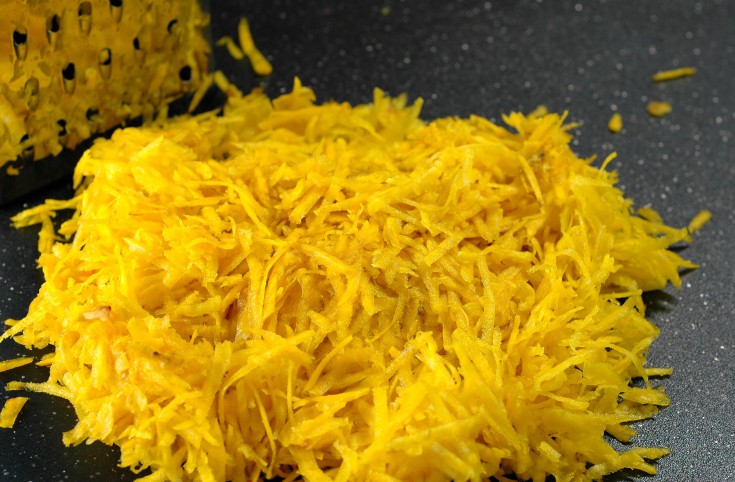Quick! How many of you, dear readers, will admit to eating beets other than under duress? Not many, I’m guessing. And I know why. Beets have a reputation for being a particularly unappealing vegetable. While some praise their “earthy flavor,” many more find that same quality to be the culinary equivalent of eating dirt. It’s even been reported that the White House vegetable garden is a “no beet garden” on account of both POTUS’ and FLOTUS’ dislike of this lowly root vegetable.
Without question, for many people beets are a shunned vegetable. Growing up, I was firmly in that camp. Canned beets would occasionally appear on our family dinner table, and when that occurred, my instinct was to avoid them at all costs due in no small measure to their unnatural purple color, their gelatinous-looking texture, and the fact that they bled all over everything else on the plate. Their disagreeable taste was almost an afterthought.
Then, a few years ago, I was at a local farmers’ market and noticed a table piled high with what were clearly some kind of root vegetable. They were arranged in bundles of three to four roundish bulbs, with each bulb dangling from a cluster of stalks that ended in a tangle of billowy green leaves. Most striking were the colors, jewel tones of magenta, yellow, and orange. Intrigued, I approached to take a closer look and there, taped to the front edge of the table, was a sign that said “”Beets, $2.00 per bunch.” Who knew that beets in their natural state could look so appealing?
Since then, I’ve learned that fresh beets are nothing like their canned counterparts. Yes, the red ones still bleed, but you might find that tendency less objectionable if you knew that the pigment that gives red beets their color contains unique phytonutrients that act as powerful antioxidants and anti-inflammatories in your body. Still, if your preference is to emerge from meal preparation without red-stained hands, then consider using other varieties, such as golden beets and striped Chiogga beets. Because those varieties contain different versions of the same phytonutrients that are present in red beets, they don’t have the same tendency to bleed yet are just as nutritious.
More importantly, fresh beets are highly versatile in terms of how they can be prepared. I like to roast them, but they can also be boiled and steamed. Today, however, I’m sharing a recipe for a beet salad made of fresh beets that have been grated and served raw, similar to a grated carrot salad. Preparation couldn’t be easier. For each bulbous root, you simply trim and peel it, grate it on the large holes of a box grater (you can also use a food processor), and then you toss the shreds in a lemon-juice based vinaigrette. For a perfectly delicious side dish, that’s all you need to do. However, for an amazing starter salad, I suggest you top things off with some salty cheese, such as ricotta salata or queso fresco, and a handful of crushed walnuts.
So, dear readers, instead of continuing to avoid all things beet-related, I challenge you to give this version a try. I’m convinced you’ll be seeing beets in an entirely new, and delicious, light.
Shredded Raw Beet Salad
Ingredients
One bunch (about 3 medium or 4 small) golden beets
2 tablespoons lemon juice (freshly squeezed is best)
2 tablespoons extra virgin olive oil
1 teaspoon Dijon mustard
1/2 teaspoon herb salt (or plain salt)
10 grinds fresh black pepper (or 1/2 teaspoon ground black pepper)
1/2 cup (75 grams) walnut pieces (toasted if preferred)
4 ounces (115 grams) ricotta salata cheese or queso fresco cheese, crumbled
Instructions
1. Prepare the vinaigrette*: In a small bowl, whisk the Dijon mustard and lemon juice together until the mustard has fully dissolved into the vinegar. Drizzle the olive oil into the mixture, whisking continuously until the oil is fully incorporated and the mixture appears to have thickened slightly. Whisk in the herb salt and pepper. Set aside.
2. Prepare and shred the beets: For each beet, slice off both the tail of each beetroot and the stalks with the leaves. Discard the tails, skins, and stalks. The leaves can be washed and used in a salad. (They are delicious.) Rinse the beetroot under water to remove any dirt, and then, using a vegetable peeler, peel off its skin. Using the large holes on a box grater, grate the peeled beetroots and place the shreds in a large bowl.
3. Immediately after shredding the beetroots, add the vinaigrette and toss well to combine. Serve topped with some walnut pieces and shredded cheese.
*I prepare the vinaigrette first because I want it to be available as soon as I’ve shredded the beets. The beets might discolor a bit if they sit exposed to the air after they have been shredded. However, if the beets are tossed in the vinaigrette immediately after they have been shredded, the acid in the vinaigrette prevents this from occurring.
Copyright © A Busy Mom’s Kitchen
https://abusymomskitchen.com/2015/04/17/shredded-raw-beet-salad/






